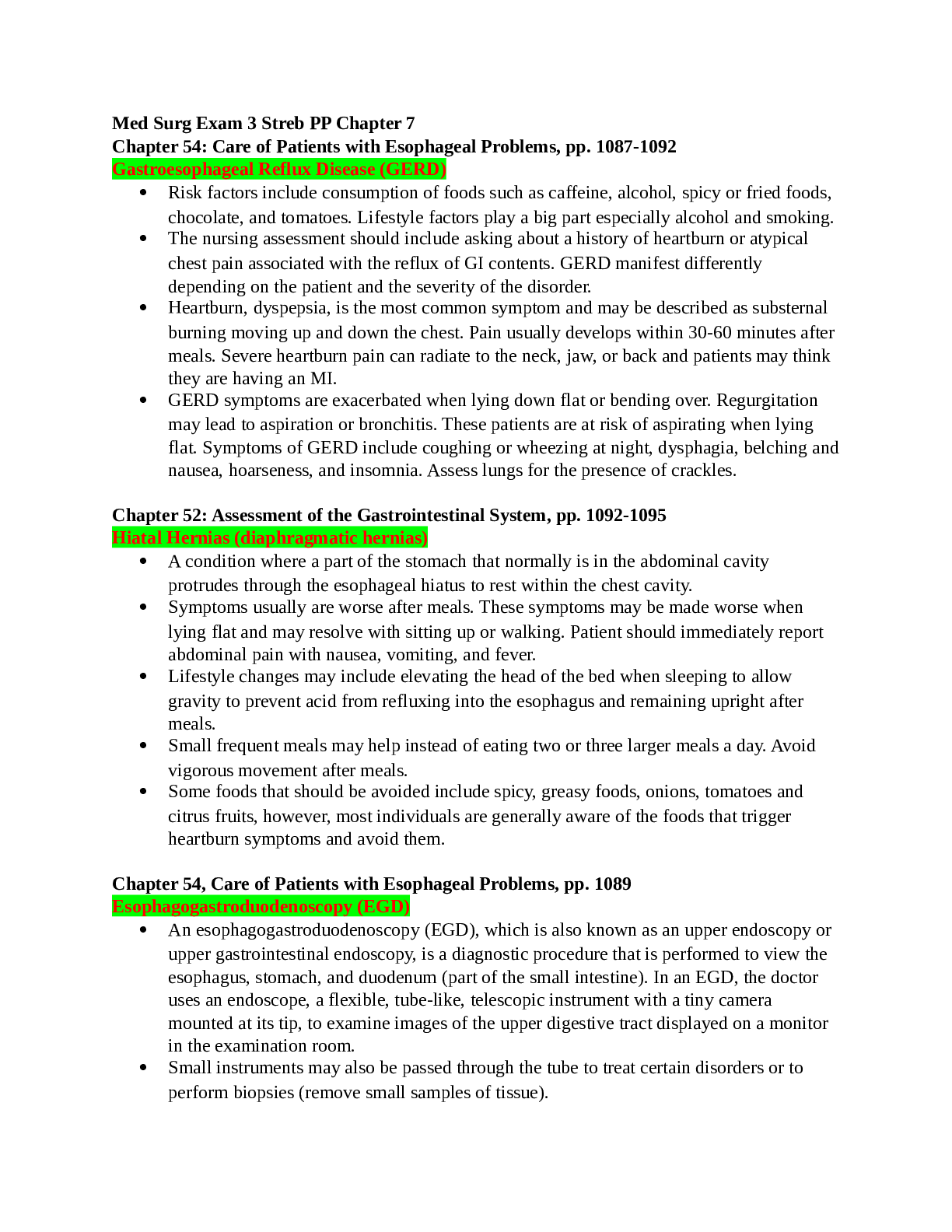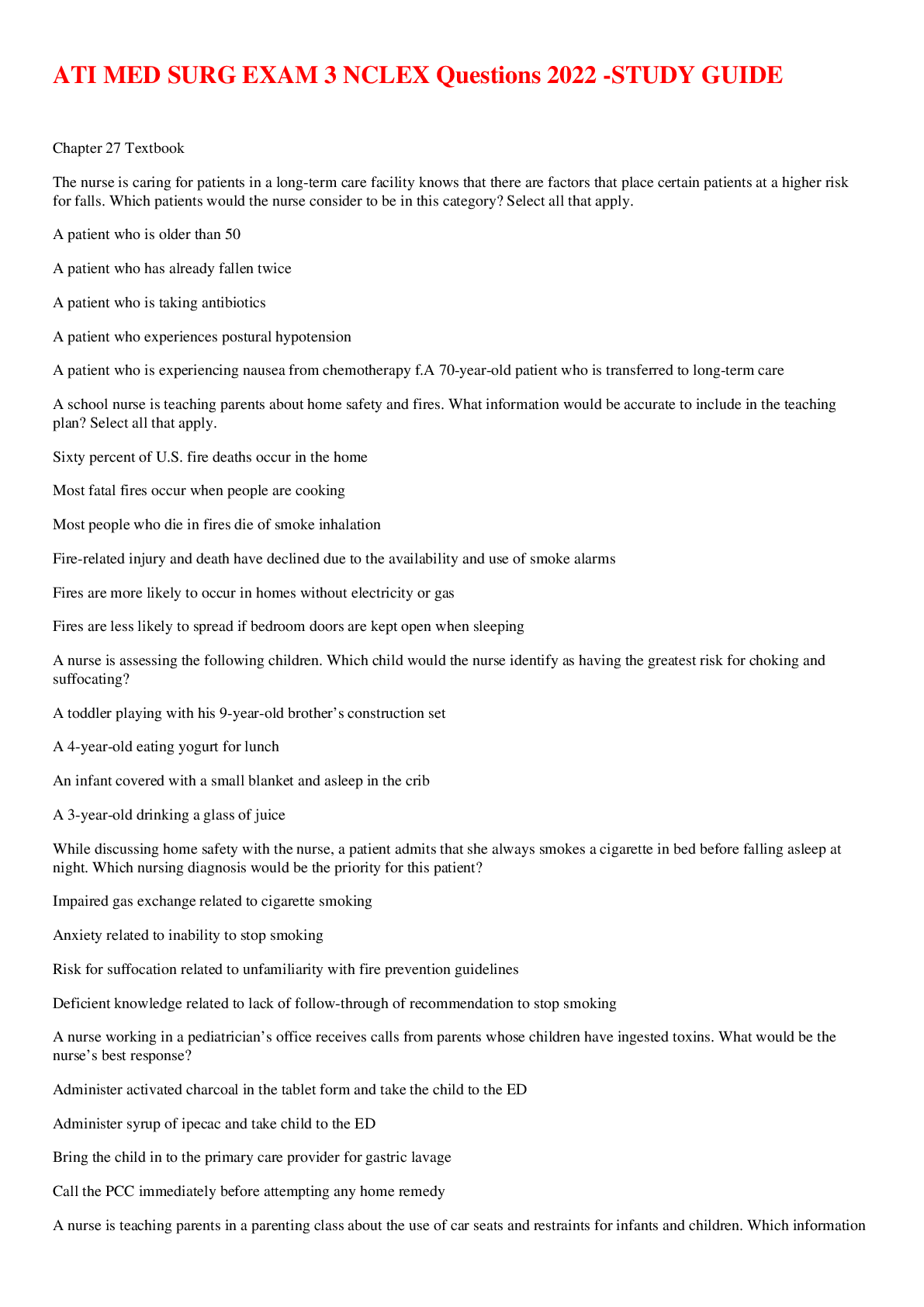*NURSING > STUDY GUIDE > NUR 242-Med Surg Exam 3 Streb PP Chapter 7 (All)
NUR 242-Med Surg Exam 3 Streb PP Chapter 7
Document Content and Description Below
Chapter 54: Care of Patients with Esophageal Problems, pp. 1087-1092 Gastroesophageal Reflux Disease (GERD) • Risk factors include consumption of foods such as caffeine, alcohol, spicy or fried foo... ds, chocolate, and tomatoes. Lifestyle factors play a big part especially alcohol and smoking. • The nursing assessment should include asking about a history of heartburn or atypical chest pain associated with the reflux of GI contents. GERD manifest differently depending on the patient and the severity of the disorder. • Heartburn, dyspepsia, is the most common symptom and may be described as substernal burning moving up and down the chest. Pain usually develops within 30-60 minutes after meals. Severe heartburn pain can radiate to the neck, jaw, or back and patients may think they are having an MI. • GERD symptoms are exacerbated when lying down flat or bending over. Regurgitation may lead to aspiration or bronchitis. These patients are at risk of aspirating when lying flat. Symptoms of GERD include coughing or wheezing at night, dysphagia, belching and nausea, hoarseness, and insomnia. Assess lungs for the presence of crackles. Chapter 52: Assessment of the Gastrointestinal System, pp. 1092-1095 Hiatal Hernias (diaphragmatic hernias) • A condition where a part of the stomach that normally is in the abdominal cavity protrudes through the esophageal hiatus to rest within the chest cavity. • Symptoms usually are worse after meals. These symptoms may be made worse when lying flat and may resolve with sitting up or walking. Patient should immediately report abdominal pain with nausea, vomiting, and fever. • Lifestyle changes may include elevating the head of the bed when sleeping to allow gravity to prevent acid from refluxing into the esophagus and remaining upright after meals. • Small frequent meals may help instead of eating two or three larger meals a day. Avoid vigorous movement after meals. • Some foods that should be avoided include spicy, greasy foods, onions, tomatoes and citrus fruits, however, most individuals are generally aware of the foods that trigger heartburn symptoms and avoid them. Chapter 54, Care of Patients with Esophageal Problems, pp. 1089 CONTINUED...... [Show More]
Last updated: 1 year ago
Preview 1 out of 23 pages
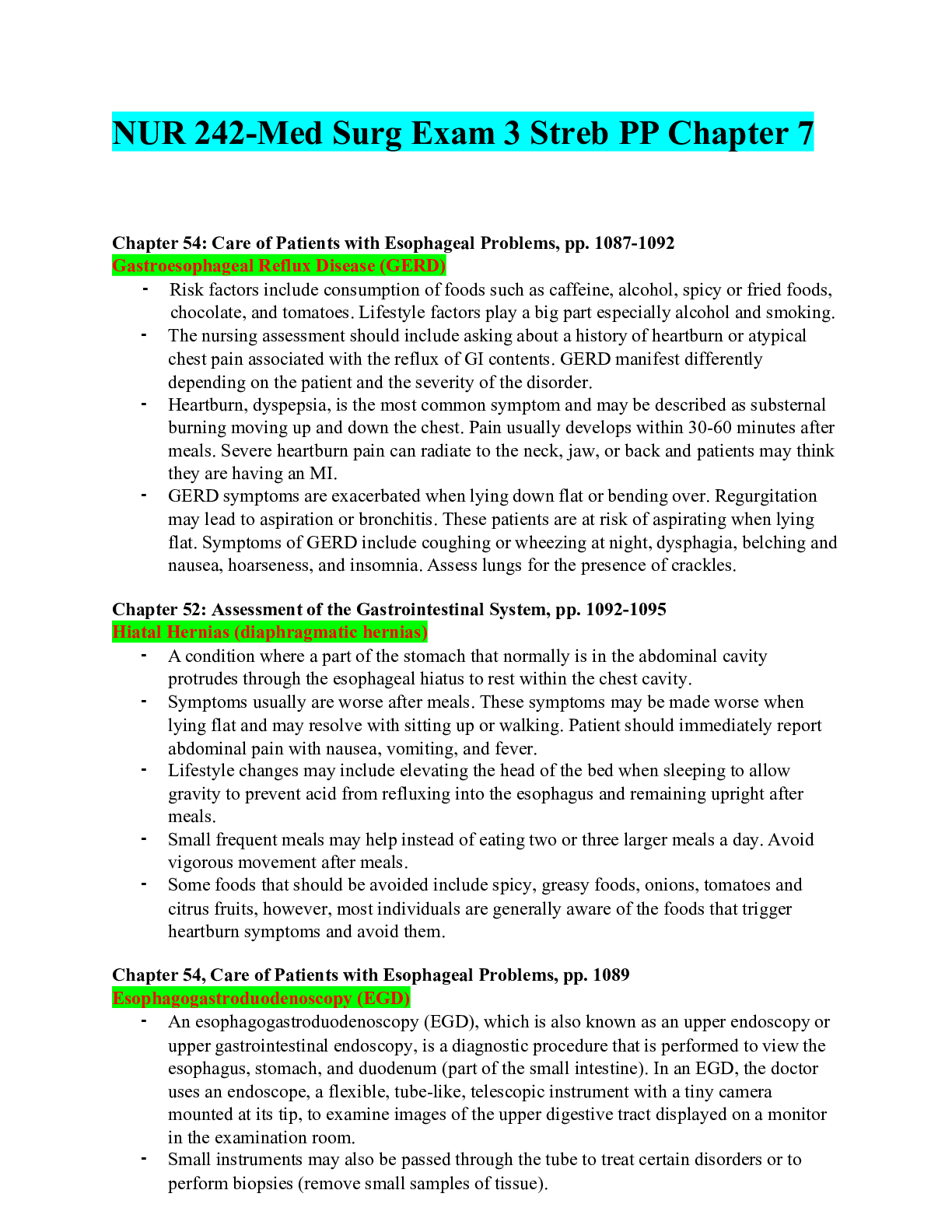
Reviews( 0 )
Document information
Connected school, study & course
About the document
Uploaded On
Apr 05, 2022
Number of pages
23
Written in
Additional information
This document has been written for:
Uploaded
Apr 05, 2022
Downloads
0
Views
47

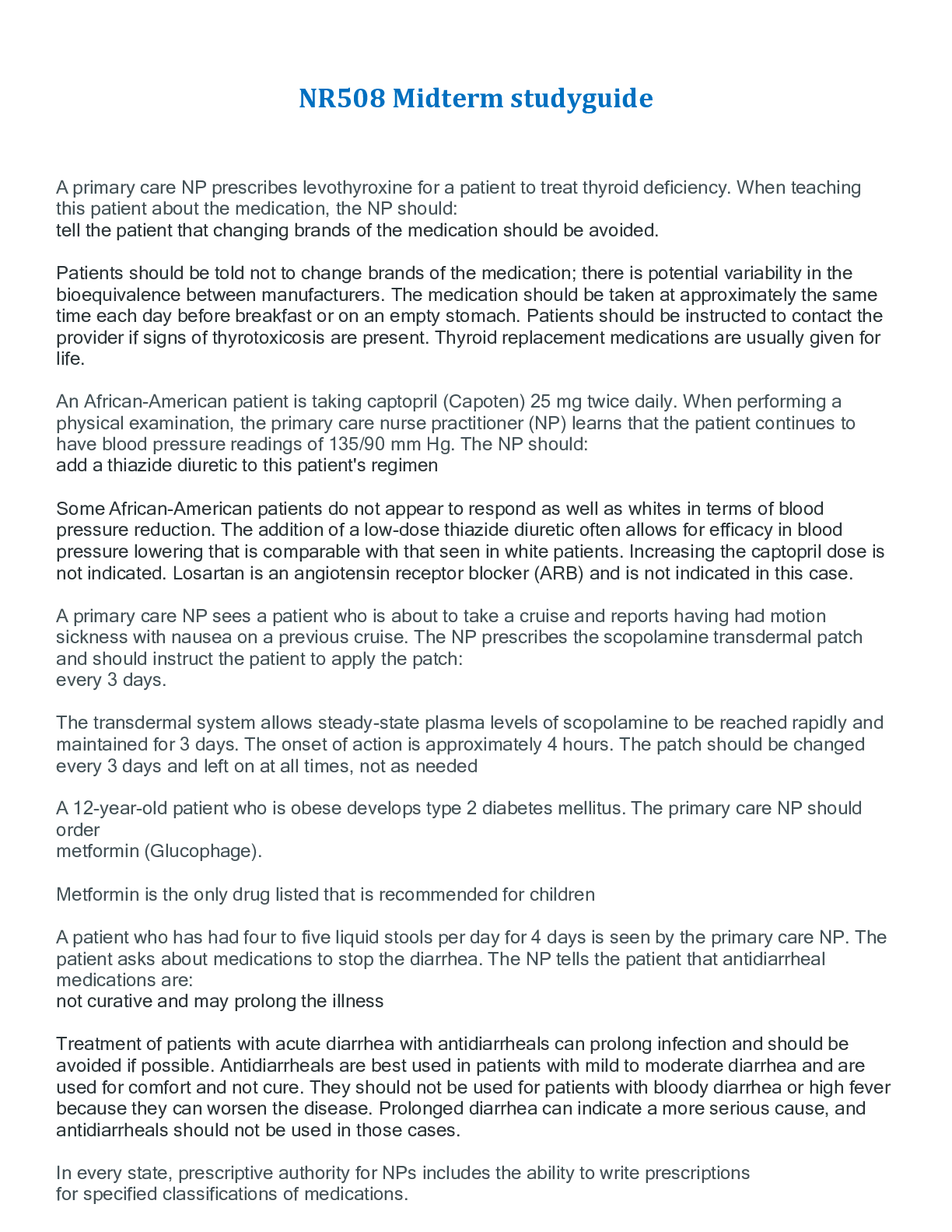
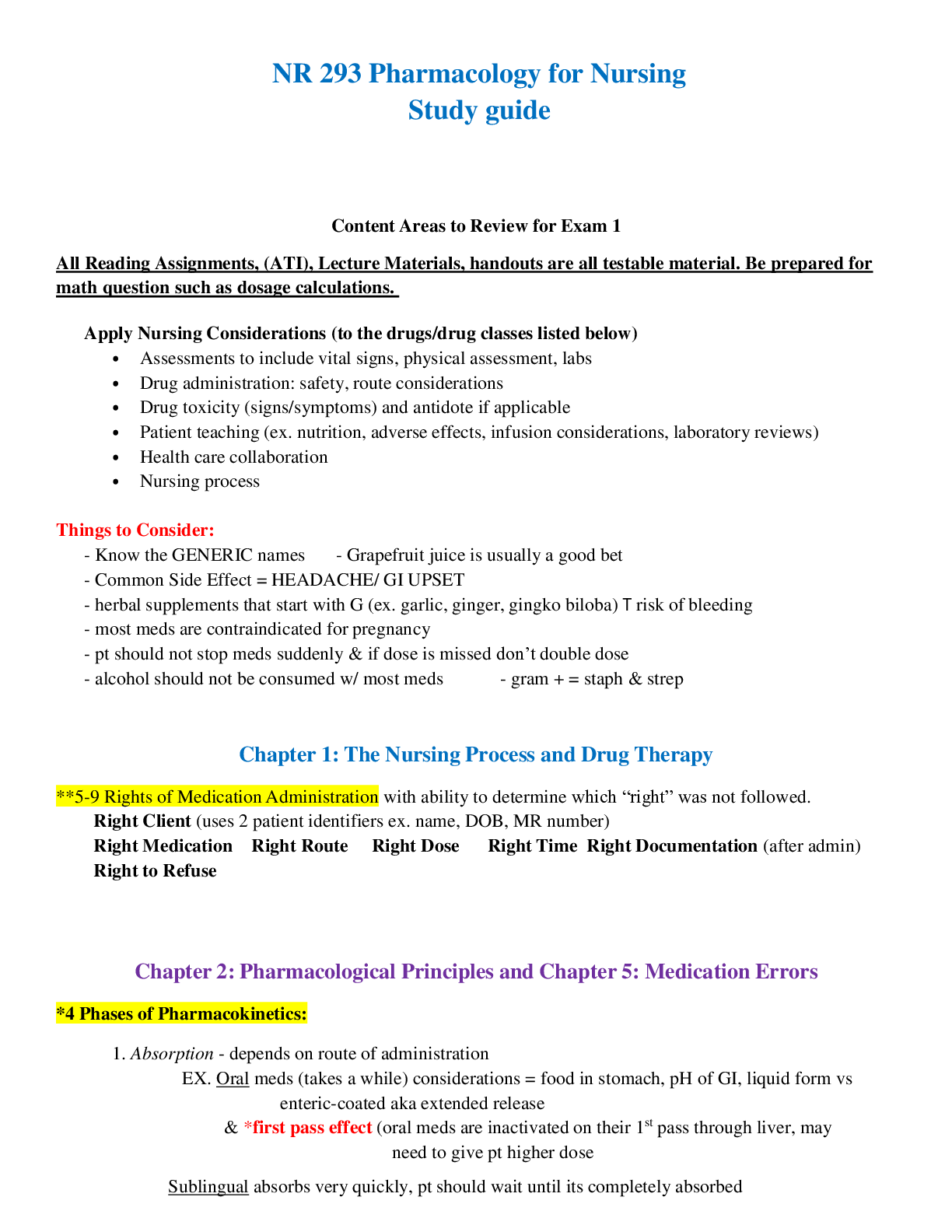
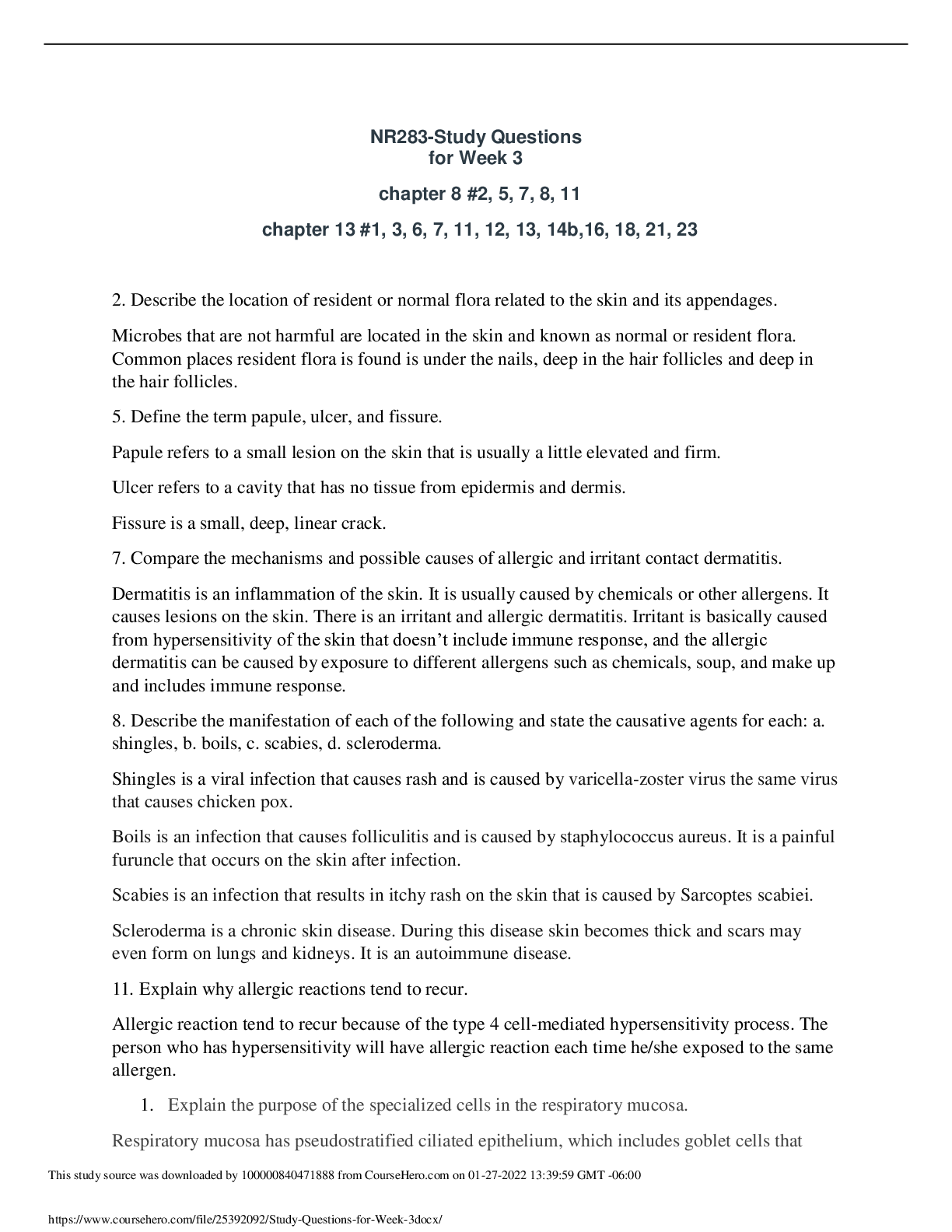
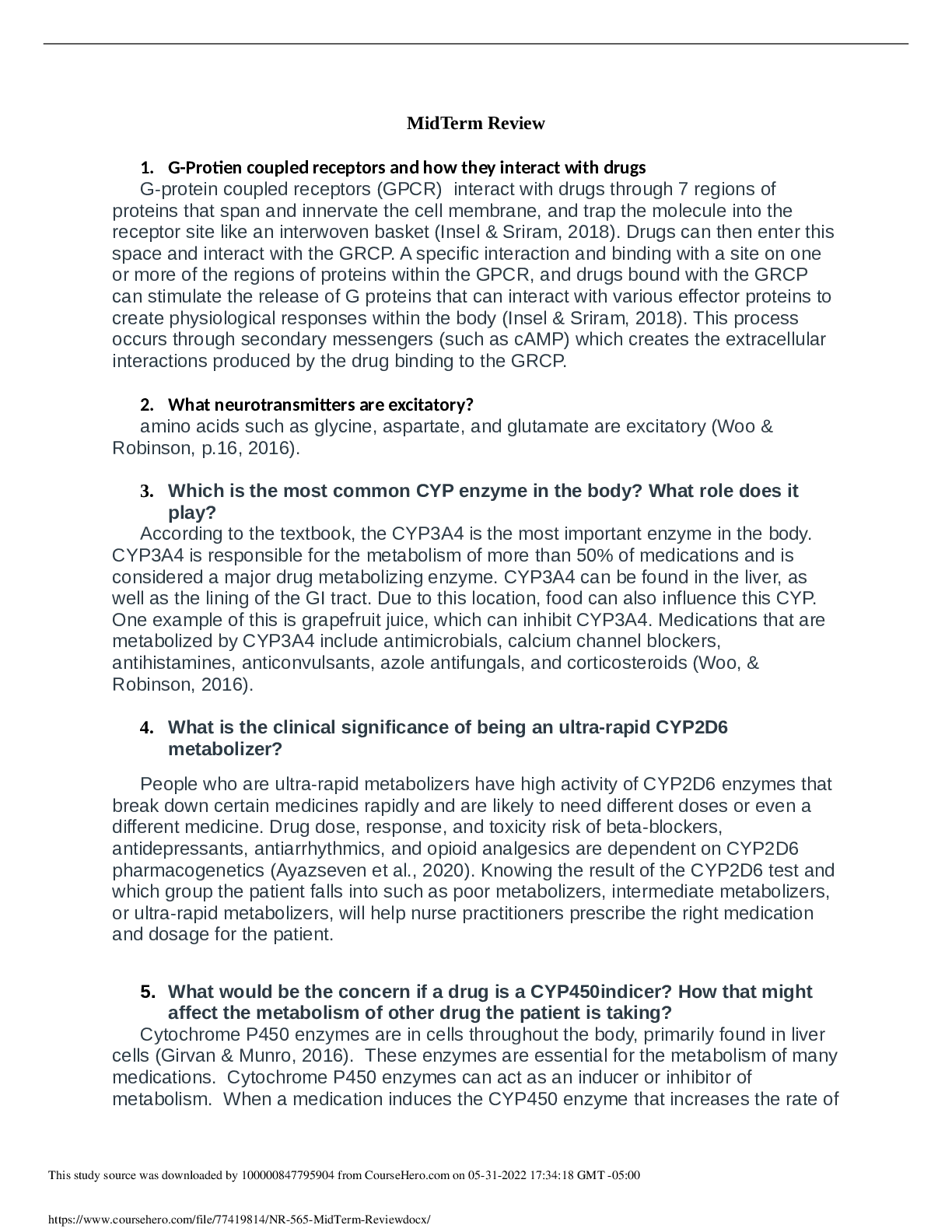
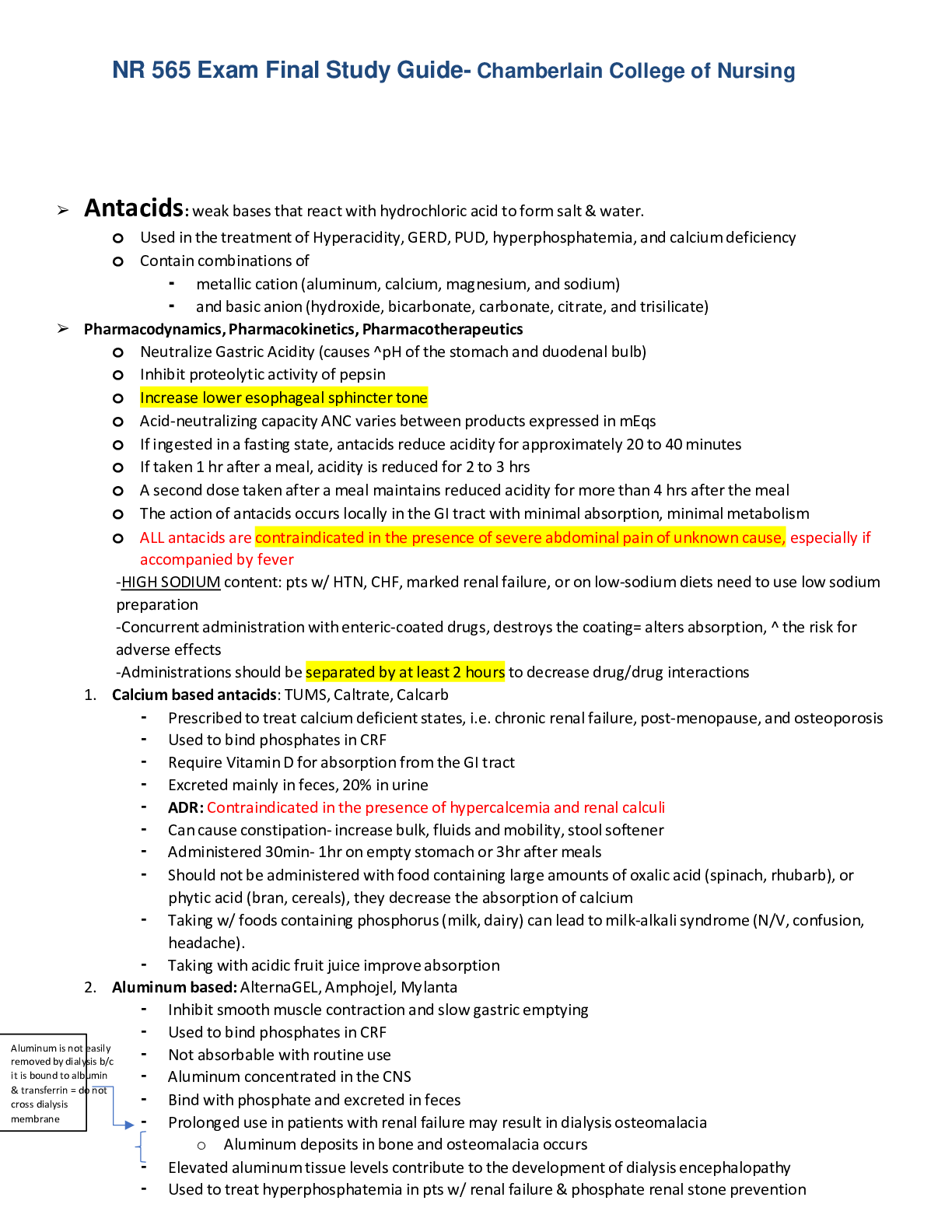


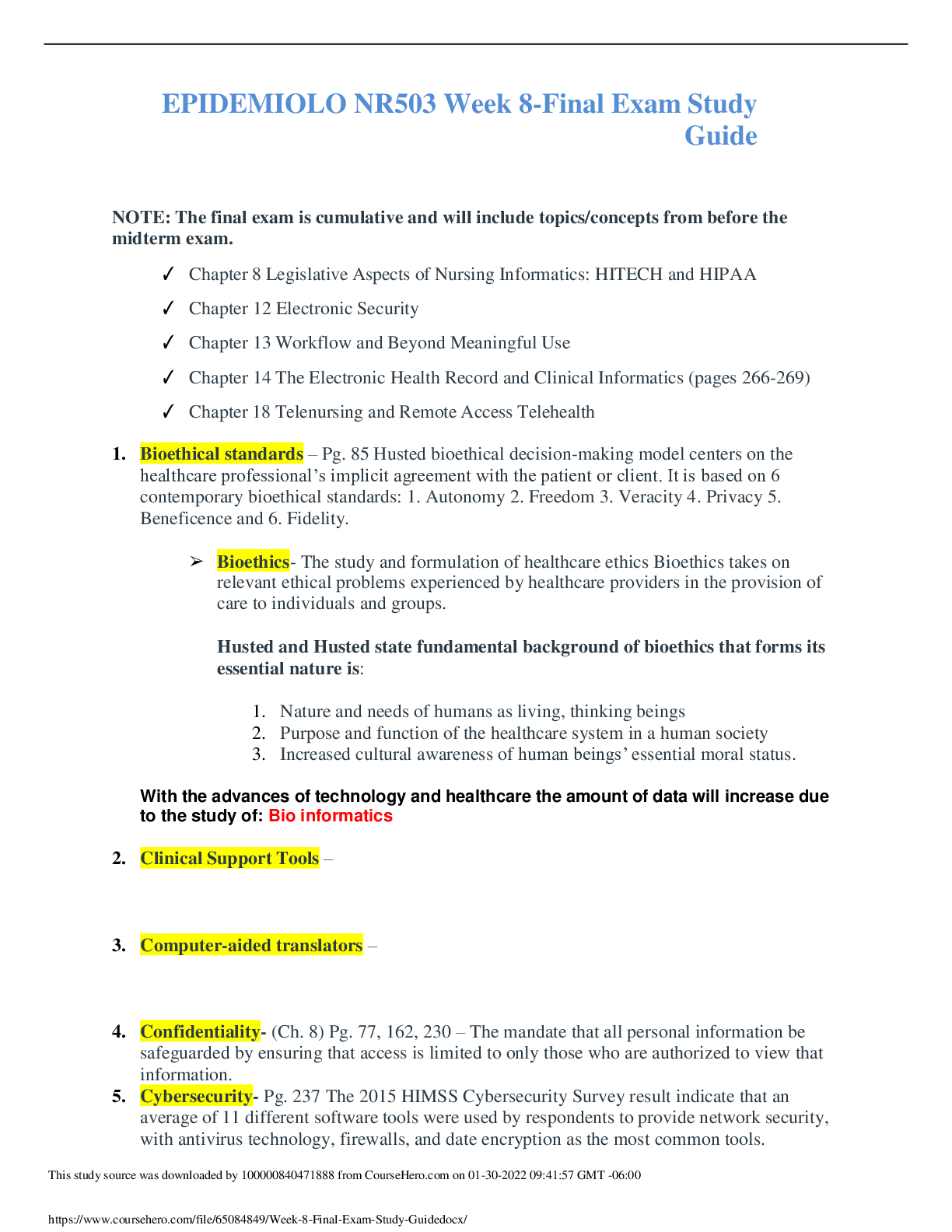

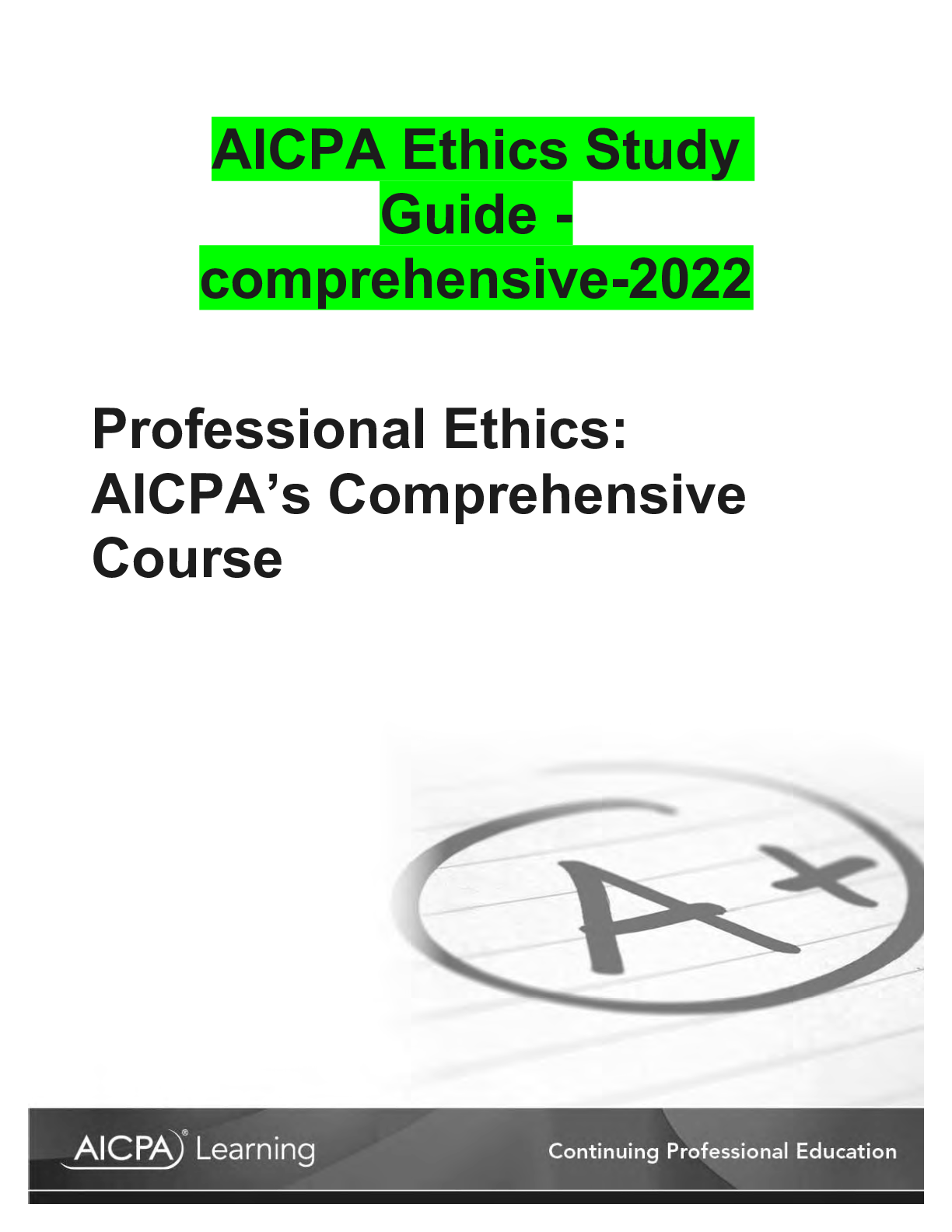

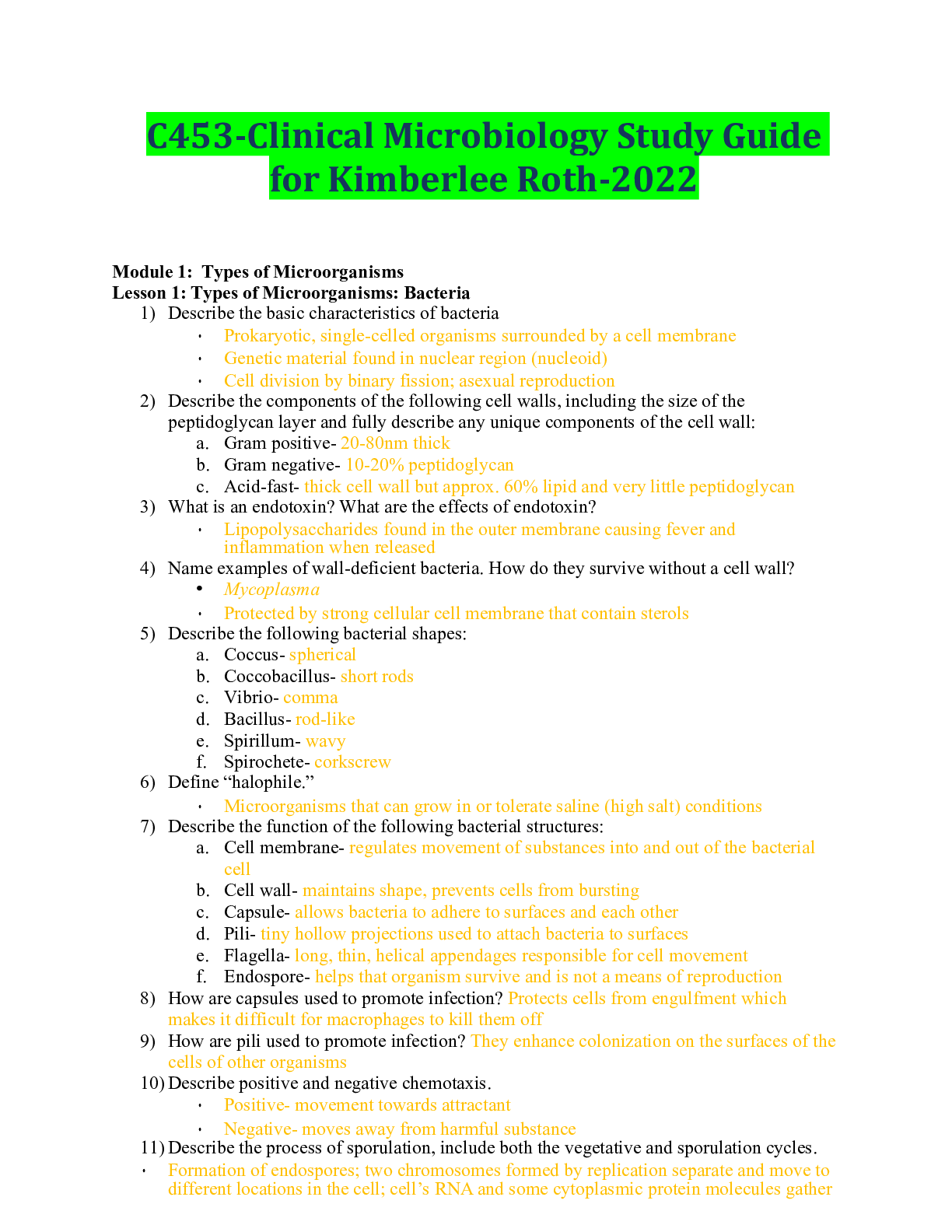
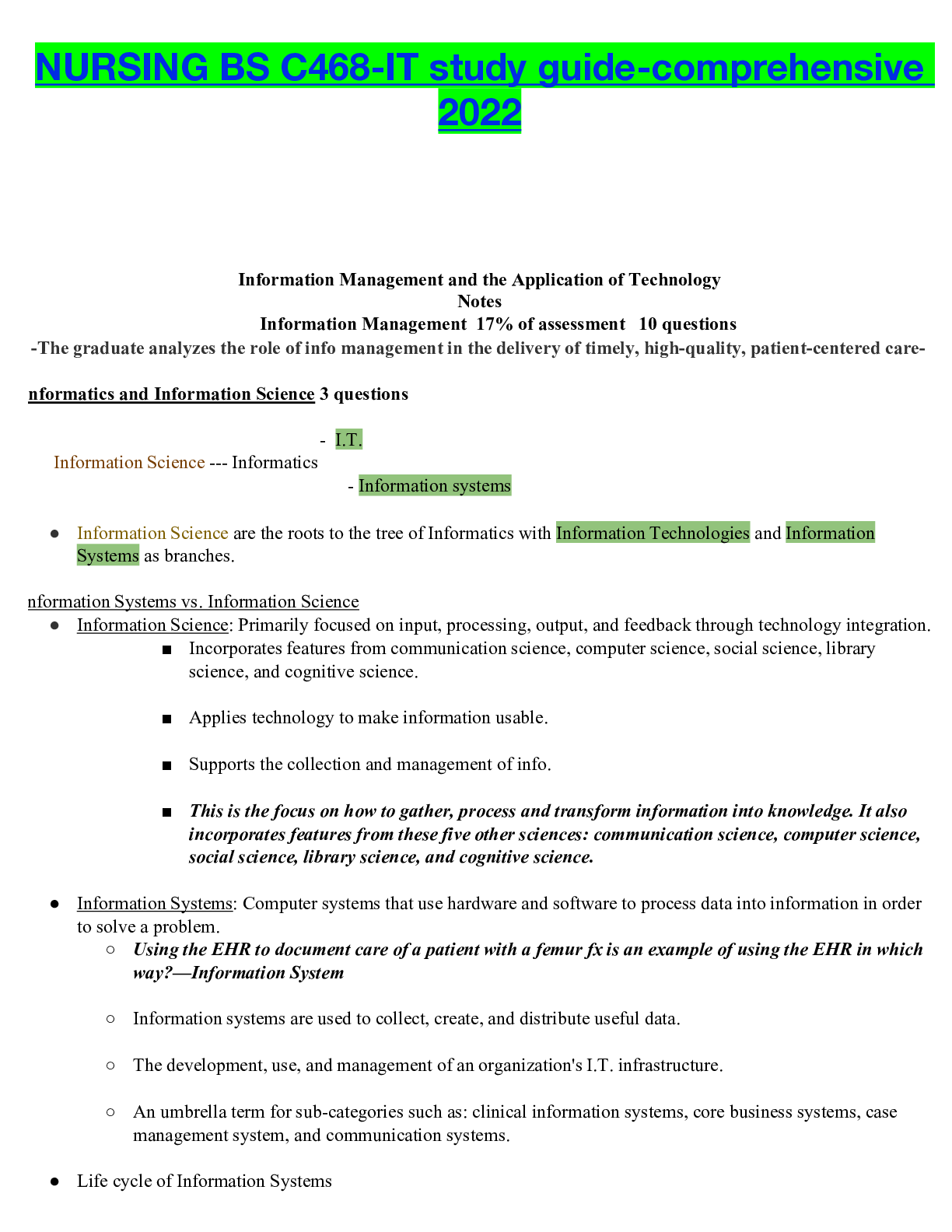


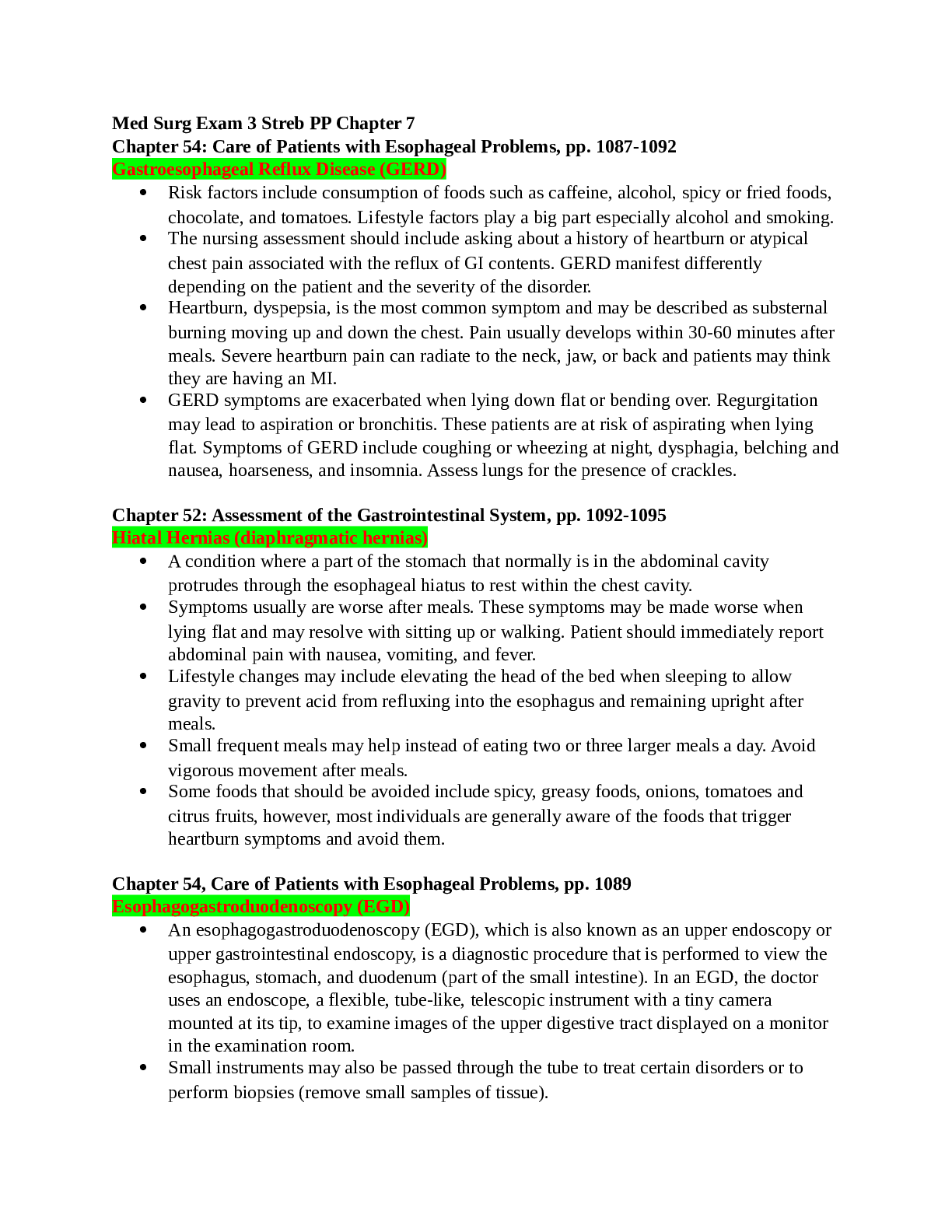
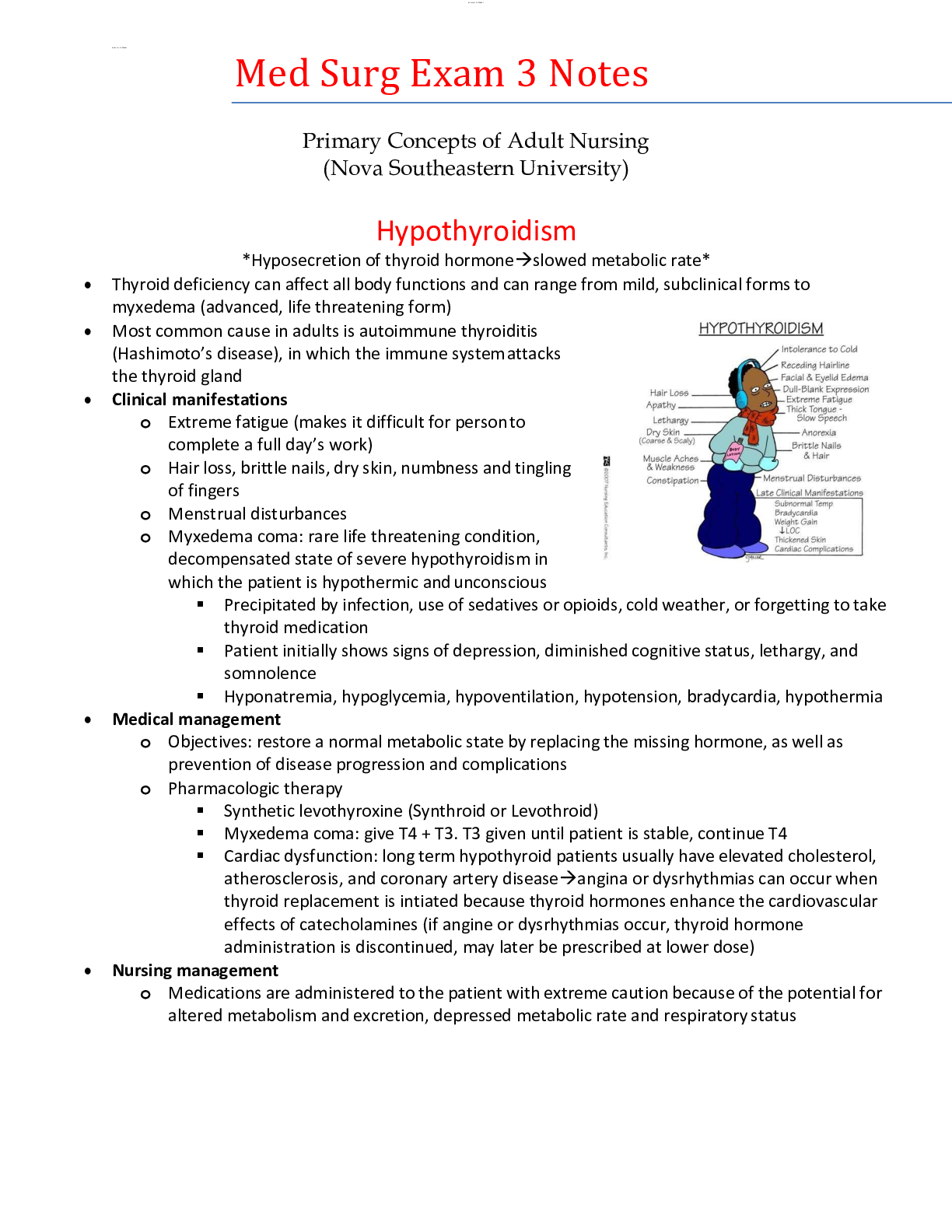



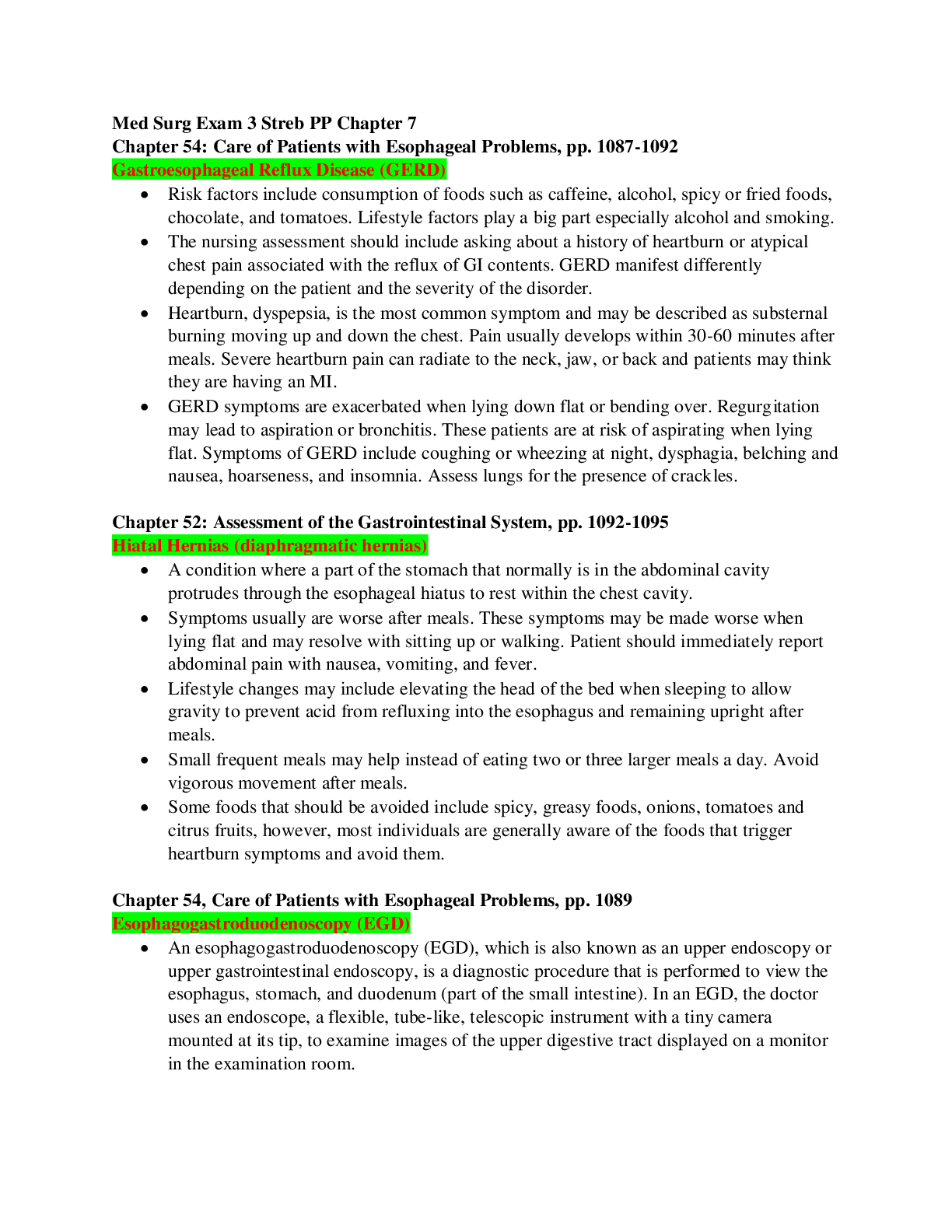

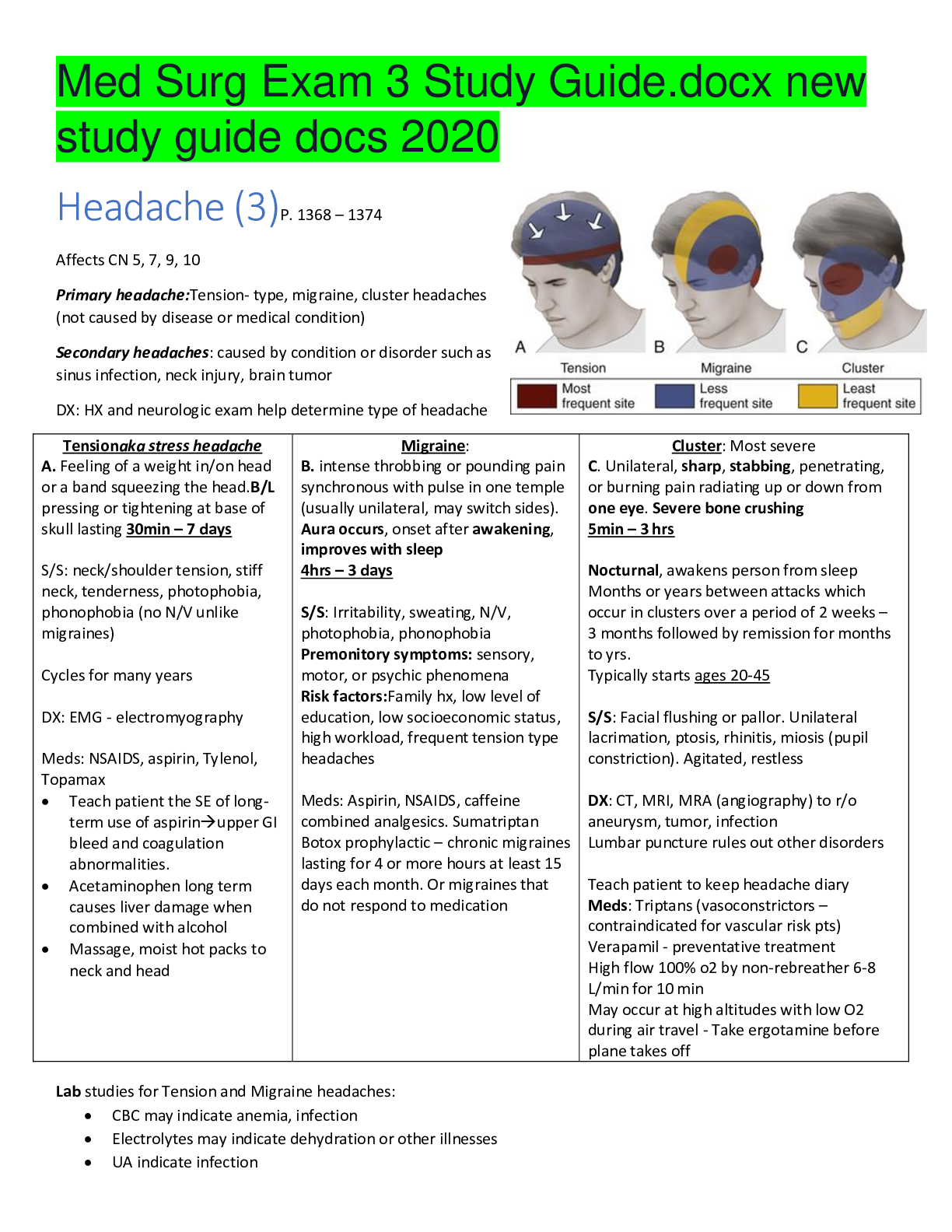
.png)
